#Cemetery | Parish Church
Explore tagged Tumblr posts
Text

Ships that stopped at Whitby Harbor (Seen here circa 1880) inspired Bram Stoker as he wrote Dracula. Photograph By Frank Meadow Sutcliffe, The Royal Photographic Society Collection/Victoria and Albert Museum, London/Getty Images
The Little-Known Shipwreck That Inspired Bram Stoker’s ‘Dracula’
Stoker was moved by grim details from the world around him while penning his horror masterpiece. The real fate of a ship called the Dmitry played an outsized role in his imaginings.
— By Melissa Sartore | August 18, 2023
The arrival of the Demeter in Bram Stoker's Dracula serves as a fundamental part of the titular character's story: the ship brings death himself to England.
Stoker drew inspiration for his genre-defining horror novel from his time in Whitby, and the dark 1885 fate of the real ship Dmitry on the town’s shore.
The death and tragedy around Stoker ultimately shaped the story that became one of the most famous pieces of English literature and set the stage for the next century of vampire lore.

The wreck of the Dmitry from Narva, now Estonia, aground on Tate Hill Beach in 1885, Whitby, Yorkshire, UK. Photograph By Frank Meadow Sutcliffe, Colin Waters/Alamy Stock Photo
The Dmitry Becomes the Demeter
During the summer of 1890, Irish novelist Bram Stoker vacationed at the seaside town of Whitby in northeast England. Despite spending only a month in the town, Stoker was enthralled by his surroundings: Grand Mansions and Hotels lined the West Cliff while remains of the seventh century Whitby Abbey towered over the East Cliff. Nearby, the cemetery at the Parish Church also served as inspiration as the story of Dracula came to life.
Stoker was also enchanted by the many ships making harbor here. He reportedly visited the Whitby Museum to explore the history of these vessels, as well as a local library, where he came upon William Wilkinson’s book The Accounts of Principalities of Wallachia and Moldova. Stoker marked in his notes:
DRACULA in the Wallachian language means DEVIL. The Wallachians were, at that time, as they are at present, used to give this as a surname to any person who rendered himself conspicuous either by courage, cruel actions, or cunning.
Stoker reportedly asked around the shore about shipwrecks in Whitby, notably the Dmitry, a ship that had wrecked five years earlier.
The cargo vessel Dmitry had set sail from Narva in Russia (modern-day Estonia) in 1885. On October 24, the Dmitry was one of two ships run ashore at Whitby by “a storm of great violence,” according to contemporary newspaper accounts. The other vessel, the Mary and Agnes, was stranded in the raging sea and a lifeboat was sent to rescue its crew. When the crew of the Mary and Agnes was ferried to the shore, per the Leeds Mercury, “their safe landing [was] the signal for loud huzzas by the thousands of people assembled on shore.”
Those same onlookers watched on to see what would happen with the Dmitry. As reported by the North-Eastern Daily Gazette, the crew remained on board in the hopes they would be able to dock, but “the sea beat savagely against the vessel. Her masts gave way and fell with a crash over her side, and the vessel herself began to break up.”
Though unclear exactly how they were rescued, in the end, all seven members of the Dmitry’s crew were safely brought to shore.
There were several unique aspects to the last voyage of the Dmitry that appear to have stood out to Stoker. The Demeter originated in Varna (an anagram for Narva, where the Dmitry originated), and similarly carried “ballast of silver sand, with only a small amount of cargo—a number of great wooden boxes filled with mould.”
Through conversations with fishermen in Whitby, Stoker learned of an untold number of local deaths at sea. Stoker reportedly made note of some 90 names from gravestones in Whitby for future use in his story, including the surname “Swales.” Soon after the arrival of the Demeter in Dracula, he wrote “Mr. Swales was found dead… his neck being broken.”
What Inspired Dracula’s Canine Form?
In Stoker’s novel, Dracula himself took the form of a dog to make his way from the Demeter to dry land, but there was no dog reported to have been on the Dmitry. According to Mel Ni Mhaolanfaidh and Marlon McGarry in 2021, the dog in Dracula may be an homage to the wreck of the Greyhound in 1770.
The Greyhound sailed from Whitby and sank off the coast of Ireland on December 12, 1770 (120 years prior to Stoker’s arrival in the town). Stoker’s mother, Charlotte, was from Sligo, a town in close proximity to the wreck. When the storm that sank the ship surged again, a young cabin boy was left stranded. The rescue effort failed, with only one out of the some 20 men sent to save him tragically dying in the process.
Stoker made no reference to a dog in his notes until two months after he’d departed from Whitby. On October 15, 1890, Stoker wrote, “When ship ran in to Collier's Hope, big dog jumped off bow & ran over pier - up Kiln Yard & church steps & into churchyard…Local dog found ripped open & graves torn up…” It’s not clear if Stoker learned of these details from the Dmitry wreck, another Whitby wreck, or was his own creation.
In the novel, the arrival of the Demeter was paired with a similarly remarkable incident: “The very instant the shore was touched, an immense dog sprang up on deck from below, as if shot up by the concussion, and running forward, jumped from the bow on the sand.”
The dog, a disguised Dracula, wrought bloodshed and death from that point forward. This dog resembled the barghest, a mythical monster often associated with Yorkshire. Spellings and specific forms of barghest vary but the dog-like being foretold of pain, disaster, or even death to all who saw it. The barghest also elicited howling from dogs in its vicinity, something Dracula protagonist Mina Murray reported took place soon after the arrival of the Demeter.
#Dracula#Whitby Harbor | Yorkshire | UK 🇬🇧#Frank Meadow Sutcliffe#Bram Stoker#Shipwreck#Horror Masterpiece#Northeast England 🏴#Grand Mansions | Hotels | West Cliff#Cemetery | Parish Church#Whitby Museum#William Wilkinson#The Accounts of Principalities of Wallachia and Moldova 🇲🇩#Cargo Vessel Dmitry#Narva in Russia 🇷🇺 | Modern-Day Estonia 🇪🇪#The Mary & Agnes#North-Eastern Daily Gazette#Mr. Swales#Mel Ni Mhaolanfaidh | Marlon McGarry#Greyhound#Charlotte | Sligo#Collier's Hope#Mina Murray | Dracula Protagonist
41 notes
·
View notes
Text
Journey to the Cross, where can you find them?
Easter is just around the corner. Here is a blog on where to travel to see crosses. The cross is the symbol of Christian faith. Traveling to the cross at this most holy of holidays makes this a faith filled trip! St. Simon Island, Georgia. I saw this cross several years ago on a visit to St. Simon’s Island. There I learned about the beginning of the Methodist church. They have roots on this…
#agricultural history#Alto Pass#Auburn Illinois#Bald Knb#Bald Knob Cross of Peace#Belique Cemetery#Blessed Virgin Mary Parish#Branson#Branson Missouri#Celtic Cross#Charles Wesley#Christ Episcopal Chuch#Christian faith#church#Church of England#Country church tour#cross#Cross at the Crossroads#easter#Easter Sunrise Service#Effomgja#faith#faith filled trip#Georgia#God&039;s love#harity#hope#Images of the Cross#Jakson County#Jesus
0 notes
Text
Jersey-Christmas

There is a tradition in Jersey that from noon on Christmas Eve to noon on Christmas Day, you can ring the bells of the western parishes. This is to remember one of the many French invasions and the role of St Peter’s, St Ouen’s and St Mary’s parish churches warning the island militia that ‘the French are coming!’
#Christmas Eve#St Ouen's Church#Isle of Jersey#Channel Is.#parish church#cemetery#foggy night#mystery#sacred space#church bells#tradition#Deanery of Jersey#Church of England
44 notes
·
View notes
Text

This home looks like a country cottage, so I was not prepared for the interior. It was built in 1830 in Charlotte Parish, Prince Edward Island, Canada. 4bds, 3ba, C$649K.
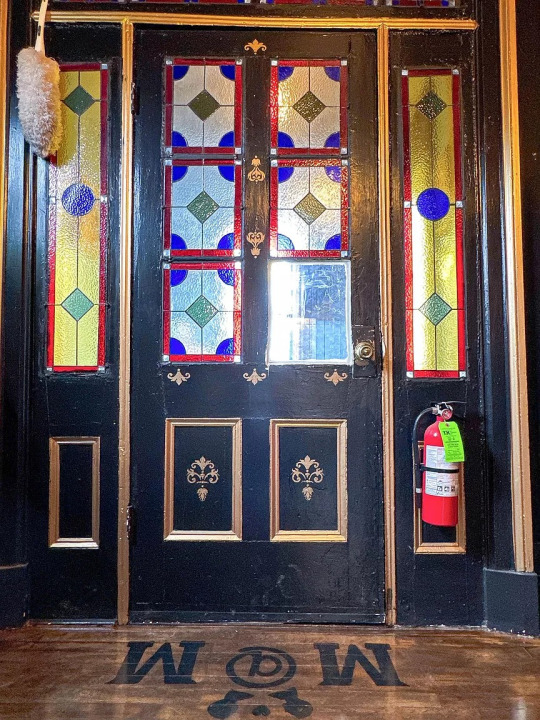
The entrance door is black with gold accents and it's not the typical country house door.
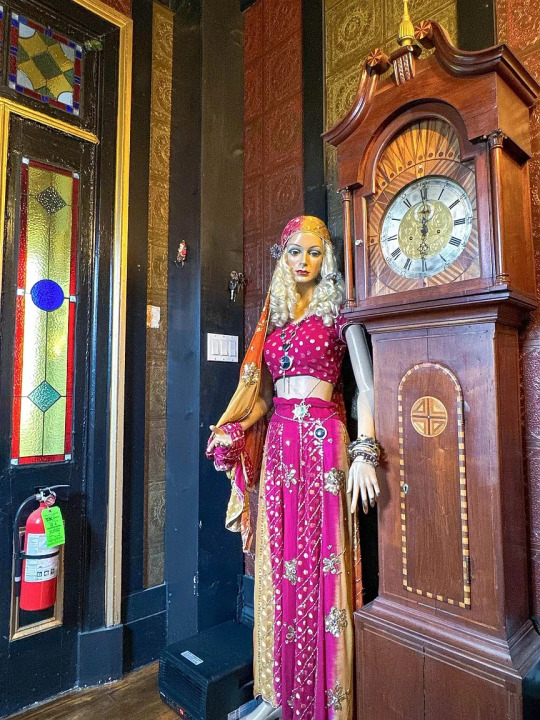
I didn't expect to be greeted by a mannequin.
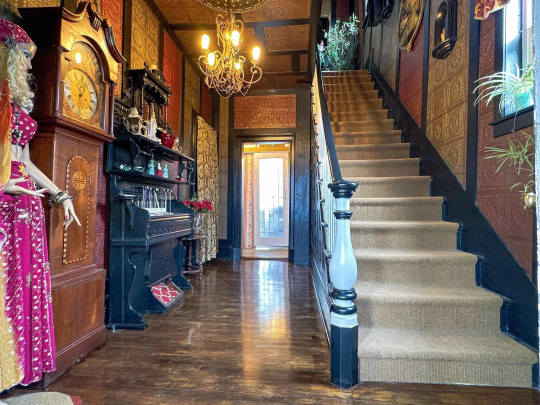
The hall is typically Victorian, but the decor is so interesting.
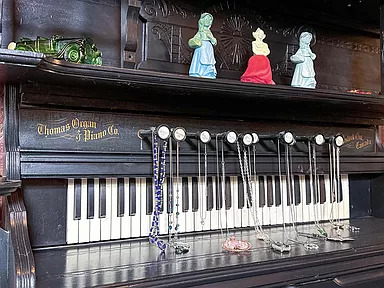
Great antique organ. I expect that the keyboard comes down- how can you play it like that?
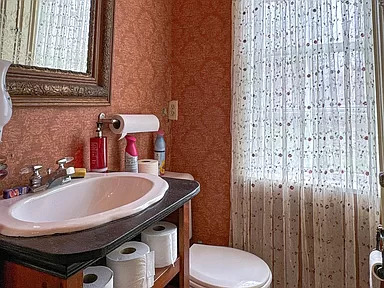
Guest powder room.


Wow, look at the sitting room. Looks like it's sunken- there are 2 steps on the right.

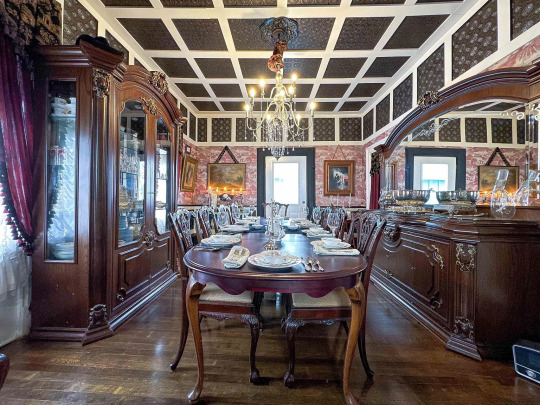
I like the dining room. It's incredibly elegant.
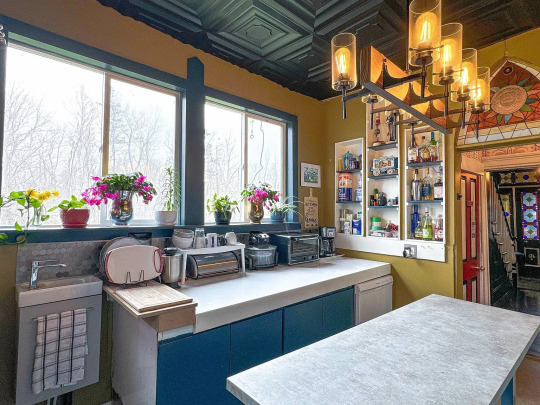
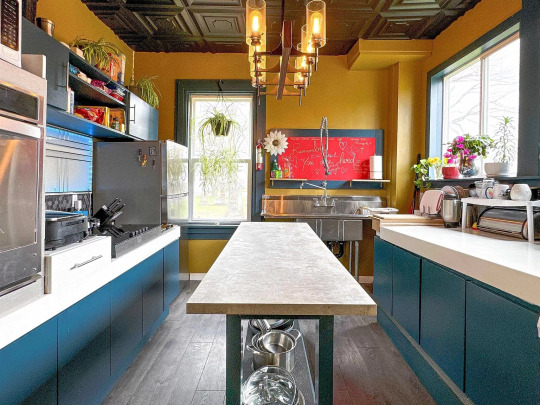
The kitchen is industrial style.

Probably the primary bedroom. I like the fireplace and stick walls.

Very cozy bedroom. This home was carefully and lovingly decorated. I always wonder what makes people sell homes that were obviously loved.
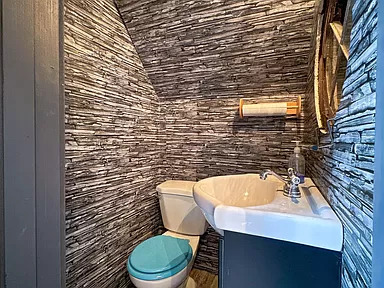
This room has a half bath.

Here's a lovely elegant bedroom.

It's empty, but this room could be anything.

Love the fireplace in here.

The full bath looks like it could use some updating.
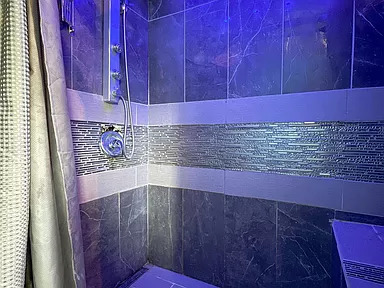
The shower looks new, though.


There's potential above the garage.

A pretty, small country church is next door and the new owner of the house will also share and enjoy its cemetery.
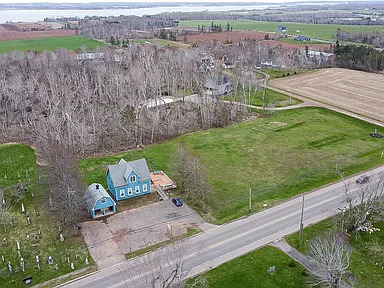
The house is on a .51 acre lot.
https://www.zillow.com/homedetails/14173-Saint-Peters-Rd-Charlotte-Parish-PE-C1C-0N6/349631687_zpid/?
208 notes
·
View notes
Note
I’ve been reading some craft books and online posts about the world building because my story is an urban fantasy set in present day US, in a fictional town, and theres not a secondary world where the fantasy happens, it’s all in the real world, except the magic is a secret that only certain people know about, but all of the resources I find about world building only talk about fantastical worlds that exist by themselves and not the kind of more subtle world building that I’d have to do. Do you have any tips?
Guide: Creating a Fictional Town in the Real World
Step 1 - Choose Your Location - There are two ways to go about choosing a location for your fictional town. One is to go the "Springfield U.S.A." route, ala The Simpsons, and be vague about the specific location (borough, parish, district, county, region, state, or province) and instead give a broader geographic region... "the East Coast," "the Pacific Northwest," "Central Canada," Northern Scotland," etc. The other option is to go ahead and put your fictional town in a specific location. Just figure out where (for example, somewhere outside of Des Moines, Iowa) and go to Google Maps, click on satellite view, then start zooming in on big empty areas. Choose a place big enough to fit a town. Yes, in reality it's probably farm fields, pasture, or someone's property, but that doesn't matter. You don't have to actually show it on a map. It's just a plausible spot to build your town. Now you can measure how far it is to other places, you know what highways to take to get to it. You can even do street view to get the lay of the land, see what the landscape looks like and try to envision the buildings there. You can also use what's there to create parks, popular recreational areas, and anything else your town needs.
Step 2 - Choose Your Inspiration - Even when you're creating a fictional town, it's still a good idea to use a real town (or two, or three) from that general area as inspiration for your town. For a fictional town in Des Moines, I would zoom in on the map to find a nearby town of similar size... like Elkhart, then I can take a look around to see what it's like. Just looking at the map, I can see they have a couple of churches, a couple baseball fields, a very small main street/downtown area with a couple shops and restaurants, a post office, a few different neighborhoods, and a cemetery. This would be a great model for a small fictional town outside of Des Moines. And, as I said, you could look at a couple other sand combine them. Once you have your inspiration town/s, you can walk around on Google Maps street view, go to the town's web site, watch a tour on YouTube (if one exists), or look up pictures in Google Image search.
Step 3 - Start Planning - This is the really fun part! First, you might want to draw a basic map of your fictional town using your inspiration town/s as a guide. This doesn't have to be a pretty map... just a basic line drawing to help you envision where everything is. Think about some of the basic things this town might have, like the ones I listed in step two, and any other things you might want your town to have, like maybe a library, a hospital, a city hall, school, and maybe a movie theater. It might even be helpful and fun to put together a collage of pictures to represent your town so you've got something in mind as you write about it. You can even choose representatives for specific locations in your story, like your MC's house, school, and their favorite hangout.
Step 4 - Naming Your Town - Start by looking at the kinds of town names that surround your town. Look for common naming conventions... suffixes like -ton, -ville, -dale, -burg, -wood, -field, etc. Words in a particular language, like a lot of French-inspired town names, or towns with geographical terms (lake, hill, valley, river, canyon, gap, etc.) My guide to Naming Locations has additional tips.
Step 5 - Populate Your Town and Give it a History - Last but not least, make up a little history for your town, again, using surrounding towns as inspiration. Who founded it? When was it founded? What's the town's main industry? What are the people like in this town? What jobs do they have? What do they do for fun?
Here are some other posts that might help:
Five Things to Help You Describe Fictional Locations Setting Your Story in an Unfamiliar Place WQA’s Guide to Internet Research Happy writing!
•••••••••••••••••••••••••••••••••
I’ve been writing seriously for over 30 years and love to share what I’ve learned. Have a writing question? My inbox is always open!
♦ Questions that violate my ask policies will be deleted! ♦ Please see my master list of top posts before asking ♦ Learn more about WQA here
99 notes
·
View notes
Text

Driftwood MMC - Year 1 - Summer
Now with Summer over, the crown has collected a grand total of $45,339. Phew! I'm definitely finding the royal treasury is filling up waaaaay faster than expected, so I've raised the thresholds for things being unlocked.
Next season, we get a brand new church and cemetery! Just as well, since this summer we had two deaths and a resurrection. I think this is meant to be just a community lot to visit, but I like playing with owned churches and will be introducing a parson to run services in this parish. Hopefully it will get to host a wedding or two!
I'm also thinking of how to go about unlocking the hedge tavern. I like the idea of it being female-owned if possible, since that was apparently quite common in the middle ages. But I'm not 100% decided on who the settlement's alewife should be. Hopefully I'll figure it out in the fall!
38 notes
·
View notes
Note
LUDOVICO TALENTI (1460-1527) : AN HISTORICAL PERSONAGE ( ZENANA S07/03)
The final scene of 7*series is actually set in Brompton Cemetery in London (1) : in the fiction Ludo Talenti is framed next to a tombstone ( 2 ) on which was written "LUDOVICUS TALENTI - SACERDOS - MCDLX - MDXXVII".
The tombstone is a prop (3) and Ludo (4) wants to indicate - to Morse and to the viewers- where he got the inspiration for his fake identity.
But a Ludovico Talenti , priest and great promoter of the arts, really existed in Venice and was parish priest of the Church of S.Crisostomos from 1480 to 1516 , contributing to its reconstruction.Maybe, the idea of this particular name cames to R.Lewis and/or Evans when they were in Venice to filming Oracle, the first episode....
Small details..but a demonstration of the extreme accuracy of the series.




Excellent!
23 notes
·
View notes
Text

aoril 6_march 24
Fifth Sunday of the Great Lent. Food with Oil
Icon of the Mother of God of “the Uncut Mount” or “Clouded Mountain”
About 250-300 years ago1 this icon was in one of the men’s monasteries of Tver and the Superior gave it to Cosmas Volchaninov in gratitude for his fine work in the Monastery church. The Icon was passed down from generation to generation, but an irreverent grandson of Cosmas took the darkened Icon and put it in the attic. His daughter-in-law had to endure many insults from her husband and his relatives. In desperation, she decided to commit suicide in a deserted bath-house. On her way there a monk appeared to her and said, “Where are you going, you unhappy woman? Go back, pray to the Theotokos of "The Clouded Mount," and you will live well, and in peace.”
The distressed woman returned home and revealed everything to her family, not concealing what she had intended to do. They searched for the monk, but they did not find him. No one saw him but her. This occurred on the eve of the Feast of the Annunciation to the Most Holy Theotokos.
They found the Icon in the attic, cleaned off the dirt, and put it downstairs, in a place of honor. In the evening, the parish priest served an All-night Vigil before the Icon. From that time, a Vigil was served in the house every year on this day.
For more than 150 years the Icon remained in the Volchaninov family. Katherine, the daughter of Basil, the last of the Volchaninov line, married George Ivanovich Konyaev, taking the Icon of the Mother of God with her as a precious inheritance. Molebens and All-night Vigils were served in the Konyaev house on March 24 and November 7 (perhaps this was the day when the Icon was brought from the monastery to the house of Cosmas Volchaninov).
In 1863, near a cemetery church of the Smolensk Icon of the Mother of God, it was decided to build a chapel in honor of Saint Tikhon and Saint Makarios of Kalyazin (March 17). The owner of the Icon, George Konyaev (who died in 1868 at the age of 97) wanted to donate the Icon of the Mother of God to the church. He asked the clergy to build another chapel for the wonderworking Icon of the Mother of God of "The Clouded Mountain.”
He also said, “I feel the very best place for it is in the temple of the Smolensk Icon of the Mother of God, since formerly the place on which the church was built was called a Mount, because it was the highest place in the city. The inhabitants took their possessions to the Mount and saved themselves from ruin during a flood. Let the 'Clouded Mountain' Icon remain here on the Mount with your blessing, and may all who are buried here be protected by her mercy.” On July 15, 1866 the Icon was transferred into the new chapel, which was consecrated by Bishop Anthony of Staritsk the following day.
For three centuries before the Revolution, the "Clouded Mount" Icon of the Mother of God repeatedly worked several miracles. She was taken into the homes of pious citizens, and children were brought to her to be healed. Copies of the Icon were made, which also turned out to be miraculous.
According to the recollection of Father John Bogoslovsky, from the village of Buylovo, his mother brought him to the wonderworking Icon several times when he was a child. He had severe pain in his eyes, and every time he was anointed with oil from a lamp hanging before her Icon, he obtained relief, then finally the disease left him. Grateful worshippers adorned the Icon with a a silver riza, and later the riza was gilded. Unfortunately, the Icon disappeared after the Smolensk church was closed.
The memory of the "Clouded Mount" Icon did not fade, however. In 1993, with the blessing of Archbishop Victor of Tver and Kashin, a copy of the "Clouded Mount" Icon was painted, and veneration of the Icon resumed. The "Clouded Mount" Icon of the Mother of God is commemorated three times a year: on July 16, in honor of the consecration of the altar; on March 24 in honor of the Icon's first miracle; and on November 7 according to ancient custom. Now there is a venerated copy of the Icon in the Ascension Cathedral at Tver.
In the Icon, the Most Holy Theotokos is depicted standing on a semicircular elevation. In her right hand is a small mountain, the "stone cut out of a mountain without hands" (Daniel 2:44), on top of which a domed church with crosses. On her left arm the Divine Child blesses with His right hand. There is a crown on the head of the Mother of God.
We pray before this Icon when faced with desperate situations; when it seems that everyone around us opposes us; and for the correction of errant or fallen relatives.
1 This account is based on Eugene Poselyanin's book The Mother of God (published in 1914), and other sources.
#orthodoxy#orthodoxchristianity#easternorthodoxchurch#originofchristianity#sacredart#icon#theotokos#motherhood
11 notes
·
View notes
Text





On 8th April 1783 John Loudon, the Scottish architect, landscape gardener and journalist was born.
Loudon was born in Cambuslang, to a respectable farmer. Therefore, as he was growing up, he developed a practical knowledge of plants and farming. As a young man, Loudon studied biology, botany and agriculture at the University of Edinburgh. When working on the layout of farms in South Scotland, he described himself as a landscape planner.
Loudon developed a limp as a young man, and later became crippled with arthritis. Crippled by rheumatism and arthritis, he had to endure an amputation at his right shoulder after a botched operation to correct a broken arm. He learnt to write and draw with his left arm and hired a draughtsman to prepare his plans. At the same time he cured himself of an opium habit that had been keeping the pain at bay.
Around 1803, Loudon published an article entitled Observations on Laying out the Public Spaces in London, he called them Breathing Places and Country Zones.
This led to a series of commissions for landscape projects in which he sought to introduce 'more of the picturesque' into the English landscape. The results were illustrated in his 1806 Treatise on Country Residences.
This experience gave him an admiration for the 'old' 'formal' 'geometric' gardens which had been out of favour in England for a century. He praised them in his Encyclopaedia of Gardening (1822) and later advocated a style of planting design which he named Gardenesque. The aim was to place exotic species in natural compositions. The influence of this idea lives on. Loudon was an advocate of public parks and published important works on glass houses, architecture, horticulture and agriculture.
He wrote a book in 1840 book called The landscape gardening and landscape architecture e of the late Humphry Repton, esq, not the first to use the terms for gardening, he was the one that used them extensively from then onwards.
John Loudon also designed large greenhouses for his parks, the third pic shows one he was commissioned for the Royal Horticultural Society in 1818.
Loudon established himself as a city planner, decades before Frederick Law Olmsted and others began to work. His vision for the possibility of long term planning for London's green spaces was illustrated within his work, Hints for Breathing Places for Metropolis published in 1829. He envisioned city growth being carefully shaped and circulation influenced by the inclusion of green belts, ideas not adopted until well into the 20th century.
His work on cemeteries also was significant. Churchyards were becoming full, especially in urban areas, and new cemeteries were being opened by private enterprises. Loudon designed only three cemeteries (Bath Abbey Cemetery, Histon Road Cemetery, Cambridge, and Southampton Old Cemetery where the design was rejected)but his writing was a major influence on others.
An unusual creation by Loudon is the memorial to his parents, as seen in pic four, which stands in the grounds of St John the Baptist, Pinner's parish church. It is in the form of a stone wedge, with a fake stone sarcophagus within. It has been Grade II listed since 1983.
John Loudon passed away on 14th December 1843 aged 60 in London.
10 notes
·
View notes
Text






Dudakovichi village; part two. The rector of the Dudakovichi Church noted that many peasants not only do not go to divine services, but also do not baptize newborn children and bury the dead in the cemetery without a priest. (In fact, the babies, apparently, were baptized secretly by the believers themselves; in the case of burials, prayers were read at the cemetery by them, and masses were celebrated for the deceased in the nearest parish church afterward.)
The story dragged on. The drastic measures taken against the residents did not bring almost any expected results. Someone even confidently concluded that «there is a hidden spirit of perseverance among the people». In the second half of the nineteenth century, the authorities decided to give the church the appearance of an Orthodox church in the Byzantine style in order to deprive the peasants of any hope that «this church can continue to convert to Latinism». In 1869, the new Dudakovichi Church was consecrated (that can still be seen today). Comically, however, it still did not work out to persuade the local peasants and gentry to a new faith. After 1905, here, as throughout the region, there is a transition to «Latinism». And even more than sixty years after the church was rededicated, it was written that «served in the old way».
In general, religious coercion in Dudakovichi caused only a cooling towards religion. It manifested itself, as you can see, in the fact that the Orthodox parish was never revived. Services in the church were discontinued at the beginning of the last century, then the building was used as a granary; the bell tower adjacent to the main entrance to the church was dismantled for farm material.
In the 90s, architectural and archaeological research was carried out on the territory where the church is located. Fragments of glove bricks dating back to the 17th century were found; single burials, apparently of monks, were found under the foundations of the object
#aesthetic#christmas#photography#cottagecore aesthetic#history#old history#abandoned church#church#abandoned object#history aesthetic#architecture#old architecture#belarusian architecture#belarusian history#dark architecture#southern gothic#rural gothic#gothic
25 notes
·
View notes
Text

christmas cheer # 5 : merry christmas!
inspired by events that occurred today, jake x reader non idol au
reader and jake take a shower together but nothing happens its christmas
———
christmas eve
the car ride to mass was 30 minutes long and filled with jovially singing along to christmas carols and harsh debates on whether or not the bruins would make it past the first round of the playoffs that jake had no input to (consensus: no). he held your hand the whole way, giving it squeezes when the grandparents or aunt or uncles he had never met were brought up.
your dad assured him there wouldnt be much socializing at mass: everyone wanted to get out of there.
but when you pulled up, and walked to your grandfather and aunt and uncles standing outside, seeing your grandfather shake his head, you looked at your brothers in confusion. your twin raced up to him, only to come racing back with the words, “its full” falling out of his mouth.
jaws were on the concrete. “this is why they should’ve had it at the other place!” being said by the older generation. “lets go back to my house,” great rallying by your grandfather, and everyone nodded along.
“what does he mean its full?” jake whispered to you, as you two walked side by side in the back of the pack.
“the church must be full,” you shrugged. “usually they had christmas mass over at the parish center which was larger but i guess they didnt want to? maybe theyll decide to next year.” he nodded, grabbing at your hand. you swatted it away. “my catholic grandfather is right there along with my nosy aunt and my nosy uncles, and i have an even nosier grandmother. sorry babe”
jake laughed, nodding, as you all piled into the car once again.
in the car-ride, your brother paused as he was saying something, and asked if you all could swing by the cemetery to see your mom. you, who wanted to introduce her to jake, agreed quickly.
after your dad gave directions to the lone-gone brother, two left turns and a right, you all arrived promptly. getting out, you trekked across the snow begging your dad with a bad back and a bum need didnt fall as you held hands with jake all the way there.
at your mom’s gravestone, you muttered a hi. “this is jake. hes my boyfriend. weve been dating for…a while.” she would know. you didnt need to say it. “jake, this is my mom. and to her side is my uncle mark. hi uncle mark.” jake said hello, talking to your mother in a hushed tone like he did when he met your father.
by the time you finished at the cemetery, you were rushing to your grandparents house.
they were waiting, although the food hadnt started, and your grandmother had gotten word of a man with the baby in the family. naturally, she laid on the questions.
“whats your name? how old are you? what do you do? howd you meet?” every question jake answered with extreme grace, even with interruption from your aunt to beg your grandmother to stop interrogating the poor boy. jake said he was fine.
your grandmother liked that.
when dinner ended with stuffing your faces with lasagna and alcohol, and jake being approved by everyone in the family—your grandfather took some time—you made your way to your next stop, your dad’s best friends/your moms cousin.
——
your cousins welcomed you with almost tears in their eyes—although they mightve been drunk. jake didnt get the nosy reaction that he got at your grandparents’, but he got the same reaction as from your brothers’.
the night went on smoothly, if you count joking and catching up and meeting and consuming copious amounts of alcohol, then yeah it was going extremely smoothly.
so extremely smooth, in fact, that you all hadnt realized you had been there for 5 hours, the clock already 11:40. none of you really paid attention, the alcohol did plenty to keep you all awake until your heads hit your pillows later that night.
jake and you stayed cuddled up on the couch, despite retching noises from cousins and brothers alike, and continued drinking. your eyes were the only ones that kept checking the analogue clock on the wall of their living room.
11:57
11:58
11:59
12:00
christmas day
“merry christmas,” you whispered to jake, kissing him while on the couch.
“merry christmas,” he whispered on your lips.
lying in bed, two hours later, slowly falling asleep, the two of you traced trees and stars into the others arms.
12 notes
·
View notes
Text

Episode 18: Little Trip (longer Part)

Once they had arrived at the lab, Pascal immediately sat down at the main computer, where he had put all the information he had gathered the day before. He did some calculations and collected the results separately. “hm, interesting“/,,what is it?”/“Well, there were fluctuations in the Earth's atmosphere at the approximate time of their disappearance”.

“What do you mean by fluctuations?"/ ”Well, that very evening, at the end of November, the 30th to be precise, there was an extreme drop in air pressure in a period of less than 5 minutes. Unfortunately, it is not possible to explain why this happened. According to reports from eyewitnesses, a dark flash was seen“/”a dark flash? How can lightning be dark?”…

“I don't know. After the lightning disappeared, about 2-3 minutes passed and…“/”What??“/”Unfortunately, there are no pictures or other clues, but according to an older lady from your town, a huge green ball of light rose into the sky“/” a… green ball of light?“/”Yes, and everything seems to have happened pretty quickly.“/”Do you think that has maybe something to do with my mother's disappearance?” …

“hm, it could well be, Cassandra.“/”Do you think it… It could have been an alien abduction?"/,,hmm, it's possible. I've just never seen or heard anything about green balls of light in connection with alien abductions. Especially since your city has never been the victim of such events before.“/”Maybe the people there are too uninteresting, hehe“/”Lazlo!”.

“yeah, sorry… everything is probably so harmonious there that aliens have no interest at all in abducting anyone from there"/ ‘believe me, nowhere is always peace, joy and pancakes, not even t here’/ ‘then tell me, what's going wrong or not right?’… Cassandra would have had many answers to this question, but she only had one in mind, which she didn't say.

“Well, looking at it all, it's quite possible that she's picked up by something. It's quite possible that it was… Some species…. But for now, the important thing is to locate her. I mean… she must have landed somewhere“/” and your computer can find the location?"/ ”If Polli gets involved and links the information we've collected so far with his super database, then maybe”.

“So now we're waiting for Polli until he's available again? Hach, that's really bad"/ ”hey, it's not bad if some things take a bit longer. I know, I'd like to be a bit further along too. But we said: from the start. So that we don't make any mistakes. I'm going to work a bit more on calibrating the transporter. That's less interesting for you, so if you want, you're welcome to take a little trip.”.

“A little trip… Yes, that sounds good, I haven't seen much of the city yet"/ ”Well, you see. And Lazlo can accompany you, he knows just about everything here, doesn't he, little brother?“/”Now you want me to be a guide here?”. Cassandra heard some distaste in his voice. “Well, he doesn't have to, I can look around myself"/ ”as you wish. But please be back home by 10 p.m. at the latest“/”,thihi, okay, Dad”.

Cassandra was almost gone when she was stopped. “Hey, wait…this is your first time here. I should probably give you a tour first”. She stopped, but didn't look at him, instead taking a deep breath. “if you think that's necessary“/”hey, I trust you to take care of yourself.-.. I just want to… come with you…“/”hm, o.k.”.

Towards the afternoon, the desert heat is no longer quite so oppressive, so the were able to explore the area a little on foot. Wow, where are we here? Looks a bit like a ghost town… Is that… A church?“/Yes, the old parish church, the cemetery is the oldest here”/“kind of impressive, can we go inside?”/“O.K.”.

Cassandra and Lazlo entered the church. And to her surprise, it was not at all old or dilapidated inside, as she had assumed from the outside. “They seem to take good care of everything here“/”yes, there are services here from time to time, but only for those who are interested in dealing with the one up there“/nie ”sorry, I'm not that into God“/”me neither”.

“Are you actually getting married in a church?"/ ‘What? Oh, yes, but it's a bit smaller’/ ”And you're sure… With him?"/ ‘yeah… he was the last person to see my mother alive, they were friends.’/ ‘then I'd be worried’/ ”hey, he's got nothing to do with her disappearance, if that's what you're thinking, and there's no evidence of that. So… the theory of abduction by an alien life form and the light ball phenomenon isn't that far-fetched”.

“Yes, but we won't have any real information about that until later… “/ “right, and I'm also waiting patiently”. She noticed that he was a little tense. “Is… Everything all right with you?"/ ”Yes, everything's fine. Pascal told me there are ghosts in your house too?“/”The ancestors, yes. One or more of them show up every night"/ ‘Isn't that annoying?’.

“Oh well, some nights they do, especially when they just come into your room at night when you're asleep. But otherwise they're all pretty okay. I'm glad I didn't inherit their bad moods"/ ”hehe, no, you're… Actually quite cheerful“/”yeah, mostly. well, but they're good to live with“/”hm… Probably have to grow up with them to get used to them…”.

Lazlo suppressed the urge to ask her questions about her fiancé. Instead, he focused his interest on everything that had no bearing on his emotional life. He enjoyed talking to Cassandra, looking at her. And she also found it quite pleasant to talk to him, even if she always had a strange subliminal feeling. After the visit to the church, they drove back to the city.

While some of them are out and about, Pascal has taken a bit of work home with him. As Polli wasn't in the lab today, he first took a look at the evaluations himself. And with the information he had received from him over the last few years about various planets and species, he tried to make a few comparisons. “Green ball of light…hmm, nothing.”.

Friedbert kept his nephew company for a while. The little boy knows how to keep himself busy on his own. But you still don't want to leave him on his own all the time. “Well, maybe you'll be a great musician later on, Tycho"/ ‘yes, then I can play lots of instruments’/ ‘for sure’.

Cassandra wanted to have a look at the library. So Lazlo took her there. In contrast to the church, everything there is furnished in a modern style. Lots of shelves with different books, as well as some computers where you could work and browse for free. But by now it was already after 5 p.m., so they decided to go home again after a little reading.

Shortly after 7 p.m. Friedbert has prepared dinner today. “So, how do you like the area here?“/”Oh, apart from all this sand, it's quite nice, hnhn. I like the old church“/”Oh, you've been there?“/”Yes, with Lazlo“/”Ooh..”. Friedbert looked at his brother in amazement. “What? I didn't want to let her walk through the desert alone. Cassandra smiled. “hn,, and I'm already looking forward to the next tour.”.

“When do you think Polli has time again?"/,,Very soon, I'm sure. I'll contact him again before I go to bed."/ ”OK. Maybe he can say something about this strange green ball thing."/,,I hope so. I'll be doing another test with the transporter soon“/,,May I watch?”/“ Yeah, sure, hnhn”.

The rest of the evening was unspectacular. Cassandra took another shower while the men passed the time on the computer or went to bed. Lazlo reminisced about the afternoon. For him, the company of Cassandra was a welcome change. And the desire to get closer to her continued to grow in him. But he knew he had to hold back before there was trouble again.

@greenplumbboblover , @solorisims , @plumbobgothica ⭐
#goth tales#sims3#ts3#the sims 3#ts3 story#the sims 3 story#ts3 gameplay#the sims3 gameplay#ts3 screenshots#the sims 3 screenshots#ts3 simblr#goth family#curious brothers#cassandra goth#pascal curious#friedbert curious#lazlo curious
7 notes
·
View notes
Text
The Restoration of Slavic Orthodoxy in the Foothills of Appalachia
Belle Valley is a small village nestled in the foothills of the Appalachian Mountains on the Eastern boarder of Ohio. The village with a current population of 201 (as of 2020), was originally settled in 1875 as a railroad and mining town. The laborers and their families who carved their living in steel and coal came from Eastern Europe, from Russia, Ukraine, Serbia, Romania, and other slavic nations. The mountains of Appalachia would've been comforting to them, reminding them of the Carpathian and Balkan mountains that wound their way through these settlers' homelands.
It is recorded that those first immigrants worshipped in whatever buildings were available to them, calling a Russian Orthodox priest from the nearby settlement of Robins, Ohio. In January of 1914, construction on a permanent parish began and in 1915, Elevation of the Holy Cross Russian Orthodox Church was consecrated.
Although under the authority of the Patriarch of Moscow, it seems that the Orthodox Christians of the Appalachian foothills in Ohio found a home there no matter what their country of origin. This is especially interesting considering the vast amount of political and social turmoil that wracked the Russian Orthodox Church throughout the 20th century. Yet, by the grace of Almighty God, slavs from Serbia, Russia, Yugoslavia, Romania, Ukraine, Slovania (Yugoslavia), and Latvia were all able to gather together in peace and worship together. With the mining and railroad work dwindling and population moving from small villages to urban centers, the faithful of the parish dwindled and the church was closed in 1967. I found rumors that a Greek Catholic funeral service was held in the parish in the early 1990s but have found no evidence to support this. Either way, weekly divine liturgies ceased and the building fell into acute disrepair.
However in 2020, descendants of the original Belle Valley immigrants (now part of the Ukrainian Orthodox Church) formed the Belle Valley Historical Preservation Society for the express purpose of restoring the church. Tired of commuting to various Orthodox churches in the surrounding area, the Orthodox citizens of Belle Valley have registered the parish on the National Historic Register as Holy Cross Ukrainian Orthodox Church and begun the restoration process. As of 2024, they have repaired foundational issues (the parish was sinking and beginning to slide down the steep hill), fixed the onion dome (which will also stop water damage in the interior), replaced the entryway doors, and restored several Orthodox gravestones in the accompanying Saint Michael's cemetery.
The Belle Valley Orthodox community has a priest who visits them to celebrate a monthly Divine Liturgy (held at the community center) and hopes to celebrate the first Divine Liturgy in the partially restored building for Pascha 2025. The Historic Preservation Society will continue restoration projects as funds become available. Their tenacity and indomitability reveal the heart of the Appalachian people and their love of the tradition of their ancestors is a central characteristic of Appalachian culture.






Photos: The no-longer abandoned Holy Cross Ukrainian Orthodox Church. Founded as Elevation of the Holy Cross Russian Orthodox Church in 1914/15, the decedents of the original faithful are working to restore this gem of the Appalachia foothills to its former glory
#orthodoxy#orthodox church#orthodox christianity#queer christian#trans christian#faithfullylgbtq#orthodoxleftist#inclusiveorthodoxy#thisglassdarkly#gay christian#appalachian orthodocy#appalachia#appalachian#appalachian culture#appalachian orthodoxy#orthodox appalachia
19 notes
·
View notes
Text


The Winged Skull (two views) - probably originally carved on an old tombstone, is built into the outside wall of Pencaitland Parish Church, Pencaitland, Scotland


Skull and Crossbones (two views) - Iglesia de Santa Cecilia (Church of Saint Cecelia), Trastévere, Rome
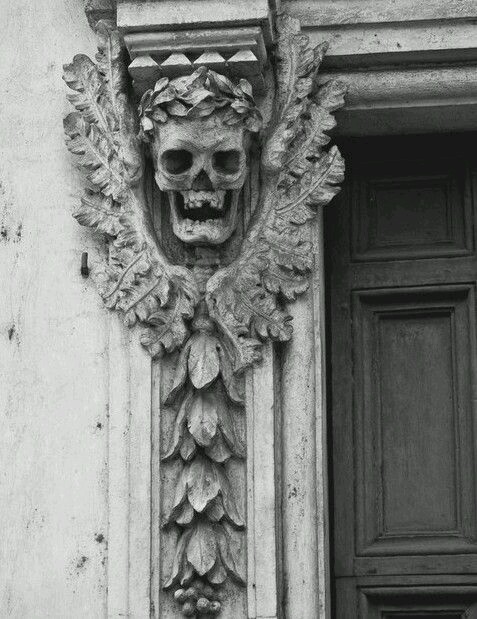
Facade of Santa Maria dell'Orazione e Morte (Santa Maria of Oration and Death), Rome

Gilles Peress - Seventeenth Century headstone - Enniskillen Cemetery, County Fermanagh, Ireland - 1987


Skull of Mary Magdelene at Saint Maximin la Sainte Baume
9 notes
·
View notes
Text

La Gran'mere du Chimquiere (Guernesiais: the grandmother of the cemetery) is a Neolithic statue menhir which stands at the gate to St Martins Parish Church, St Martins in Guernsey, Channel Islands, UK.
7 notes
·
View notes
Text


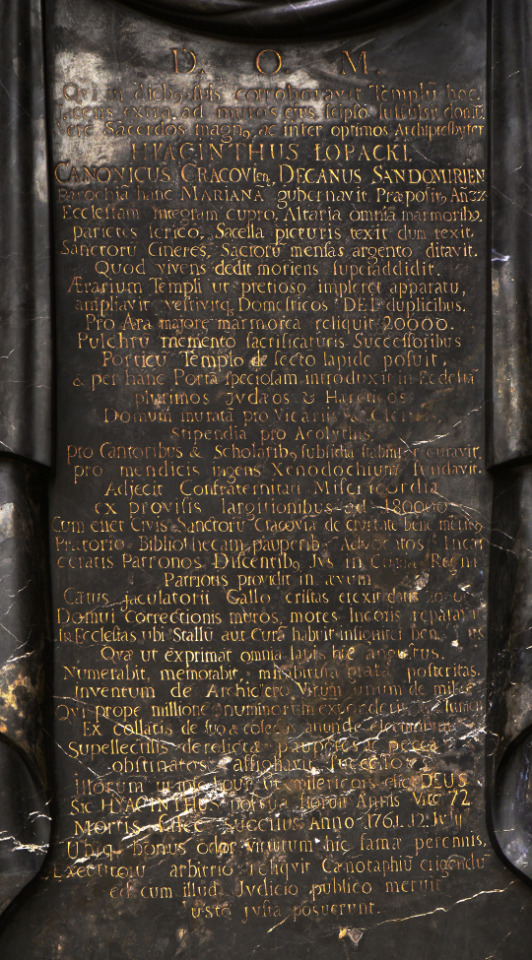

Kraków Kościół Wniebowzięcia Najświętszej Marii Panny czyli Bazylika Mariacka foto z 18 grudnia 2019 i 15 lipca 2020
Wysokie na ponad cztery metry epitafium z czarnego marmuru dębnickiego, projektu Franciszka Placidiego, poświęcone dwudziestemu czwartemu archiprezbiterowi parafii mariackiej. Jacek Augustyn Łopacki herbu Kotwica (1690-1761) był doktorem filozofii i medycyny oraz fundatorem licznych przedsięwzięć charytatywnych i artystycznych. W młodości osobisty medyk kardynała Conti zanim ten został papieżem Innocentym XIII, potem w Krakowie leczył na równi magnatów i robotników. Pochowano go w tym miejscu zgodnie z jego własnym życzeniem.
Pragnę i nieodmiennie naznaczam, aby ciało moje bez żadnej odwłoki, zaraz in crastino śmierci pogrzebione było przy kościele Najświętszej Panny Maryi w Krakowie na cmentarzu w ziemi w tyle ołtarza Crucifixi przy murze kościelnym. fragment testamentu J.A. Łopackiego
Czemu się mam żalić, że chociaż dopiero przy zaczynających się żniwach, a już frumentum Electorum nieodżałowany Prałat grobowym na proch jest starty kamieniem, że usechł w oczach naszych tak ozdobny rozmaitym cnót Świętych kolorem, dosyć pięknego bo liliowej niewinności różowego wstydu, ten hiacyntowy kwiat flos decidit & decor. fragment mowy Jana Kantego Laskiewicza na pogrzebie Łopackiego
rysunek Stanisława Cerchy z 1902 r.
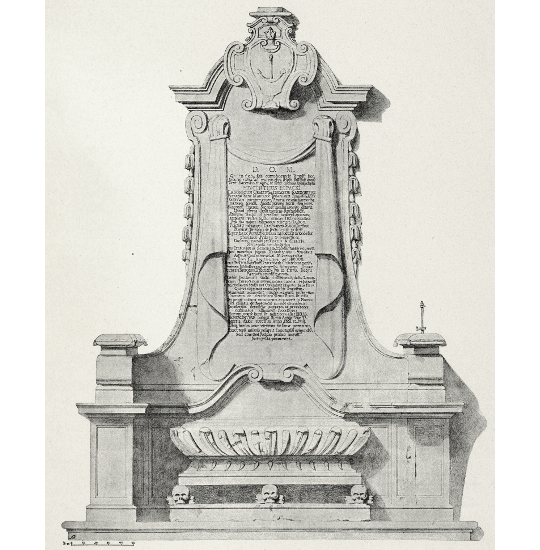
akwarela Stanisława Fabijańskiego z 1917 r.
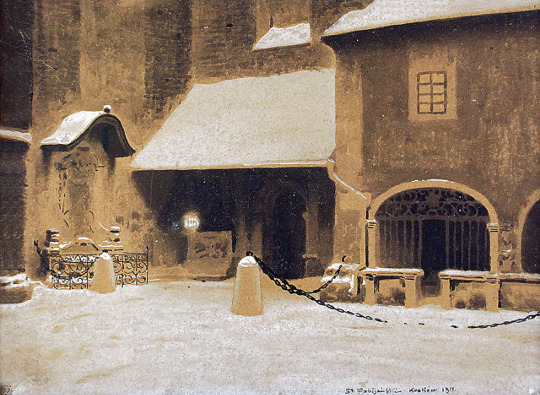
rysunek Leona Kowalskiego z 1924 r.

akwarela Stanisława Janowskiego sprzed 1942 r.

Zdzisław Gajda, historyk medycyny, przytacza anegdotę o Łopackim: …były krakowskie odpusty u Panny Maryi okazją do swoistego widowiska: przychodziły tłumy opętanych, wzbudzając widokiem swych cierpień najwyższe politowanie, co równoznaczne było z rozsupływaniem mieszka. Otóż po głównych uroczystościach kościelnych wychodził archiprezbiter na plac przed kościołem w stroju pontyfikalnym, przed nim zbierała się gromada dręczonych przez złe duchy (…). Otóż Łopacki, jak to u dobrych lekarzy bywa, nie był w ciemię bity i miał dobry zmysł obserwacji, nie odmawiał tradycją przyjętego zwyczaju, ale podejrzenie miał. I pewnego dnia się przejadło. Wyszedł jak zwykle, modły odmówił, kropidło wziął, opętanych pokropił, a gdy spodziewanego skutku wszyscy się dopatrzyli, rzekł: A oszuści, a nicponie! A udawacze! Gdybyście byli prawdziwie opętani, nic by wam nie dało to moje kropienie, bom zwykłej, a nie święconej wody na was użył!
fragmenty dyplomu doktora medycyny Jacka Łopackiego wydanego przez Uniwersytet w Padwie w 1711 r.
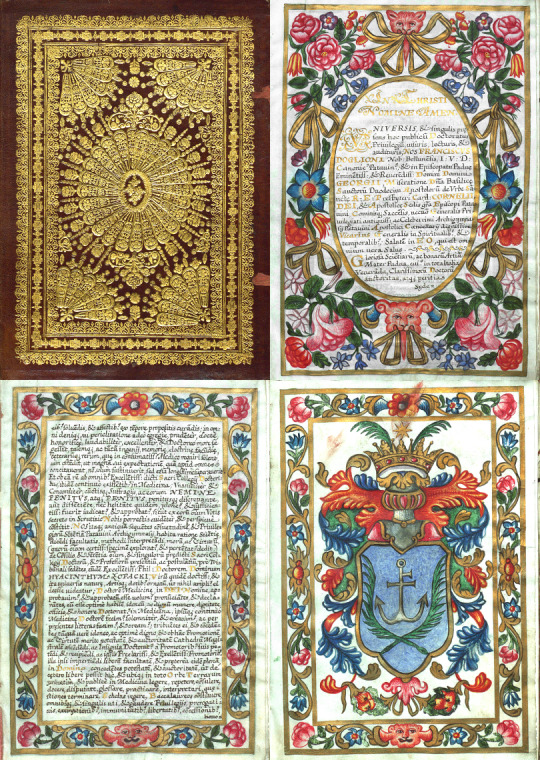
portret Iacentego (Jacka) Łopackiego w siedzibie Arcybractwa Miłosierdzia, mniej niż 100 metrów od jego grobu
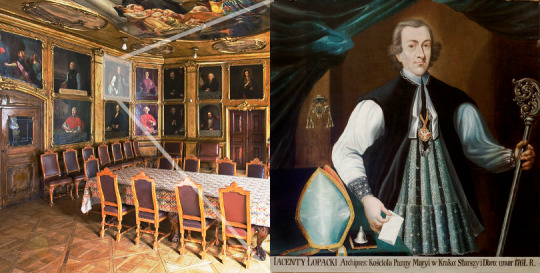
<><><><><><><><><><><><><><><
Kraków, Poland Saint Mary's Basilica taken on 18 December 2019 and 15 July 2020
Over four meters (14 ft) tall epitaph made of black marble, designed by Francesco Placidi, marking the grave of Jacek Augustyn Łopacki (1690-1761) of the Kotwica coat of arms, the 24th Arch-Priest of the St. Mary's parish, and also Doctor of Medicine and Philosophy, a philanthropist and art patron. In his younger years he was the personal physician of Cardinal Michelangelo dei Conti before the latter became Pope Innocent XIII; later in Kraków he kept treating magnates as well as laborers. He was buried on this site in accordance with his own wish.
I want and consistently make a disposition for that my body, with no delay [and] just in crastino of death, shall have buried in the cemetery next to St. Mary's Church in Kraków, in the ground behind the Crucifixi altar next to the church's wall. excerpt from J.A. Łopacki's last will
Why should I complain that though the harvest time has barely started, frumentum Electorum lamented Prelate already is ground by tombstone into dust, that a Hyacinth flower, so adorned with the color of various Holy virtues [that is] quite beautiful lily-rose innocent modesty, already wilted before our eyes, flos decidit & decor. excerpt from the speech of Jan Kanty Laskiewicz at Łopacki's funeral
[drawing by Stanisław Cercha, 1902]
[watercolor by Stanisław Fabijański, 1917]
[drawing by Leon Kowalski, 1924]
[watercolor by Stanisław Janowski, before 1942]
Zdzisław Gajda, historian of medicine, recounts an anecdote about Łopacki: …parish festivals at St Mary's used to be an occasion for a peculiar spectacle: crowds of possessed came arousing pity with the sight of their suffering, which resulted in loosening the purse strings. After the main celebration the Arch-Priest used to come out wearing the pontifical vestments to the square in front of the church and before him gathered a huddle of those tormented by evil spirits … Łopacki, as good doctors are, was no fool and had good observation skills, hence while not denying the tradition, he had his suspicions. And some day he had enough. He came out as usual, said the prayers, took the aspergillum, sprinkled the possessed, and as soon as everybody saw the expected result, he exclaimed: Ah, you frauds! Scallywags and impostors! If you were truly possessed, my sprinkling would help you nothing, as I have used ordinary, not holy water on you!
[pieces of Doctor of Medicine diploma of Jacek Łopacki issued by the University of Padua in 1711]
[portrait of Hiacynt (Jacek) Łopacki in the premises of the Archbrotherhood of Mercy, less than 100 m (90 yd) from his grave]
#dark academia#Baroque#historical facts#anecdotes#tombstones#tombs#graves#historical figures#photographers on tumblr#original photography#Poland#Polska#Kraków#Krakow#marble#catholicism#medicine doctors#priests#memorials#monuments
45 notes
·
View notes